Kicked out Canton S
on Thursday, June 29th, 2023 5:25 | by Björn Brembs
Since the Canton S strain I used wasn’t a perfect genetic background strain anyway and didn’t fly properly, I kicked it out and replaced it with the wild type Berlin data I had collected just prior to the rut and rsh mutants. Now I can collect data for two projects in one go: I check the rut/rsh learning mutants if they still behave the way they should and with the wtb control strain and continue collecting data to evaluate their optomotor responses after training. So now the learning scores for the three strains look like this:

It still doesn’t look like rut is better than wtb, so I’m still skeptical that the strain is really what it should be. The rsh data also don’t look very promising, but I still need to get more flies with a negative preference before the training.
Category: operant self-learning, Optomotor response | No Comments
Suspicion and progress!
on Monday, June 26th, 2023 2:03 | by Björn Brembs
Suspicion: rut may not be rut


Carsten Duch is identifying the muscles involved in operant self-learning:

Category: operant self-learning | No Comments
Preference results: pure vs salt
on Monday, June 26th, 2023 1:45 | by Maja Achatz
The first plot of each group show my results from the week before, and the ones beneath show the final results for red and blue light, after filling the sample size up to 20n.
Red light:
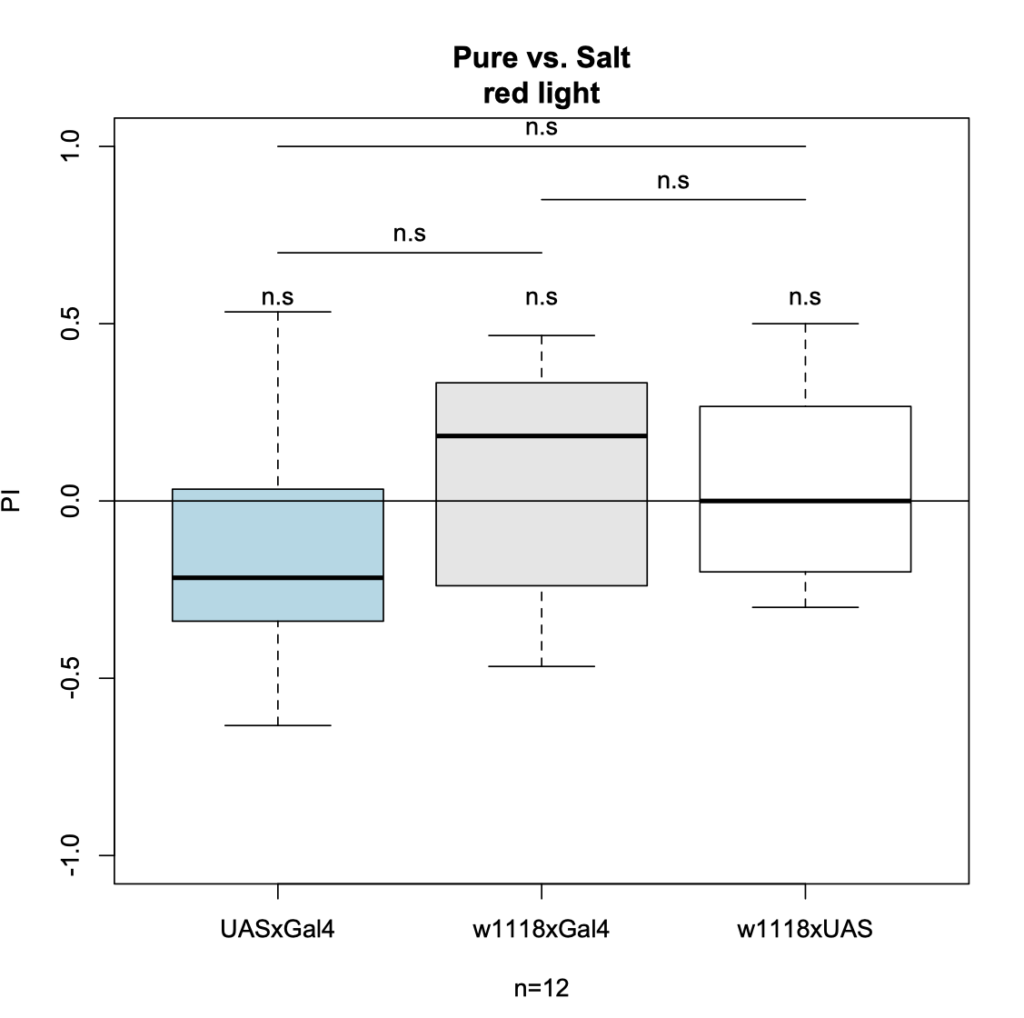
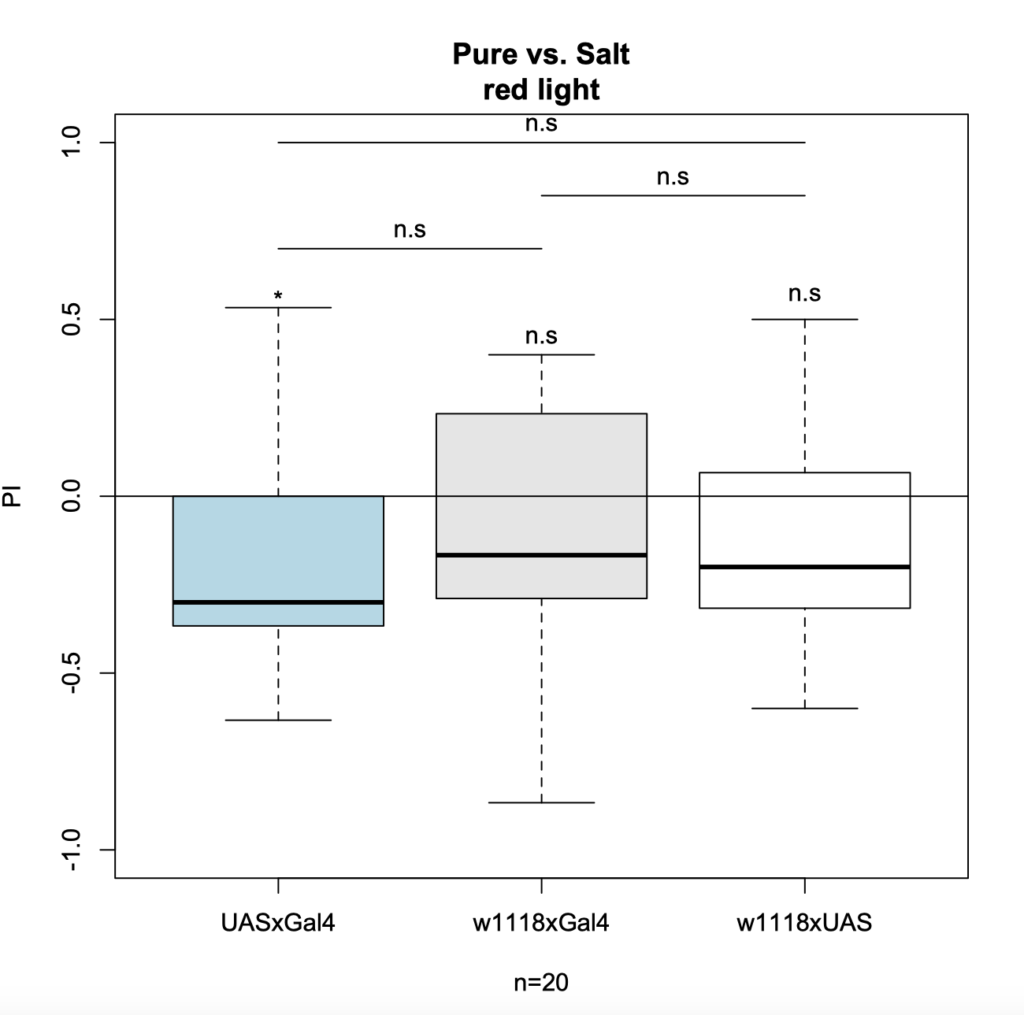
for comparison, this plot shows the control groups for the remaining 8n I had left separately:
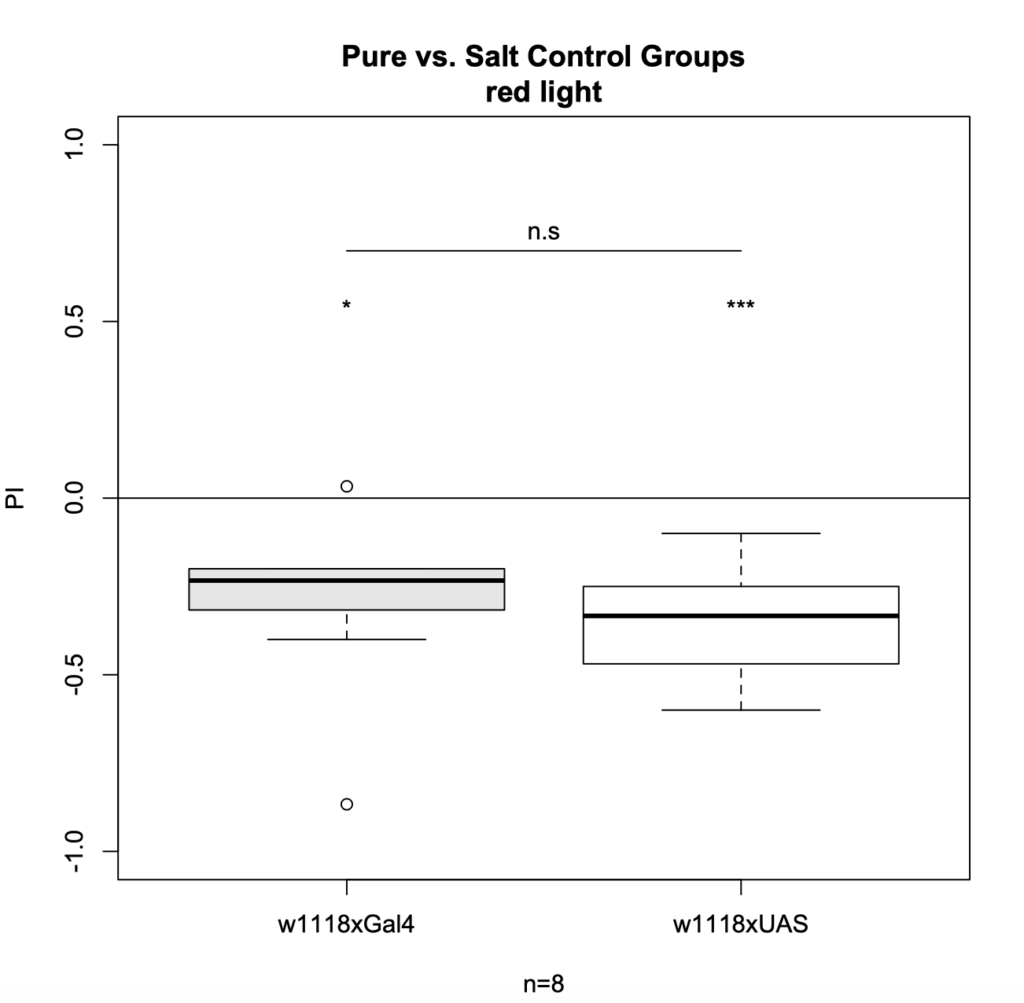
Blue light:
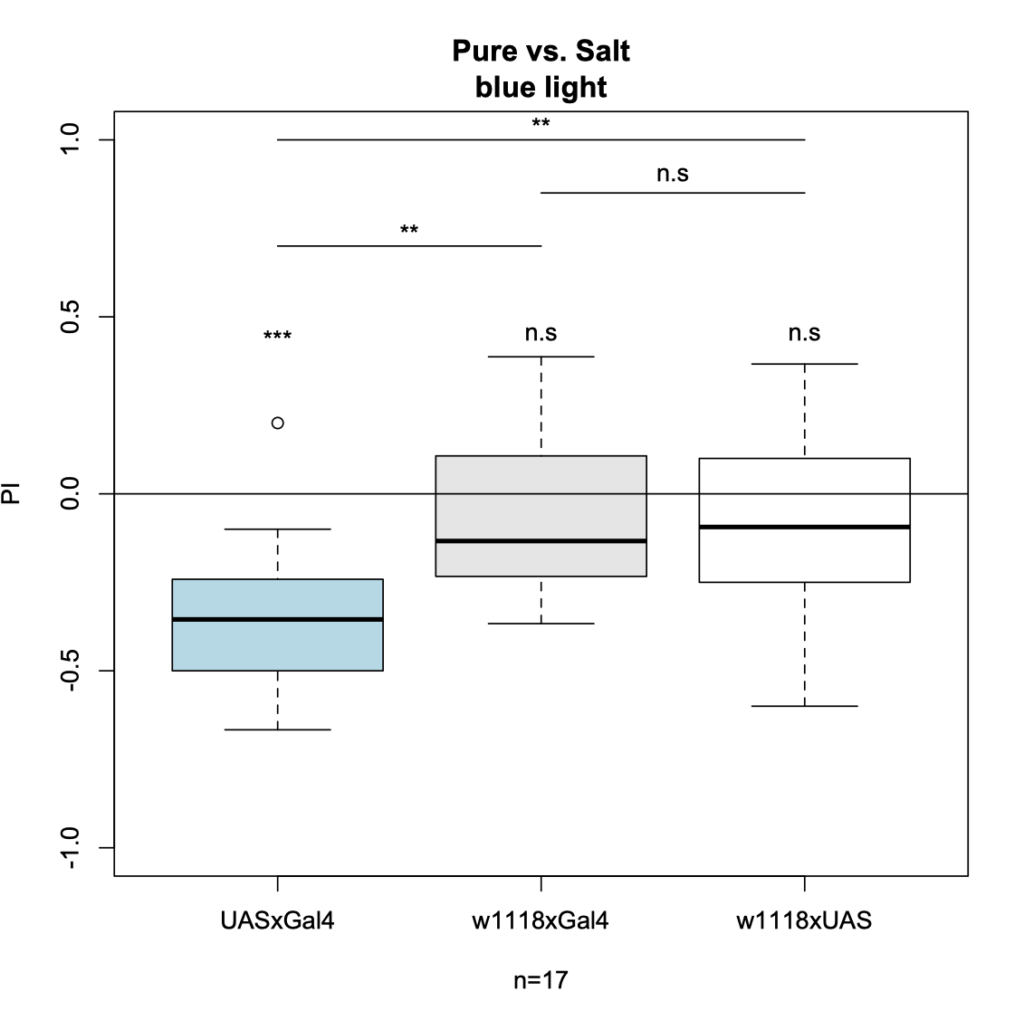
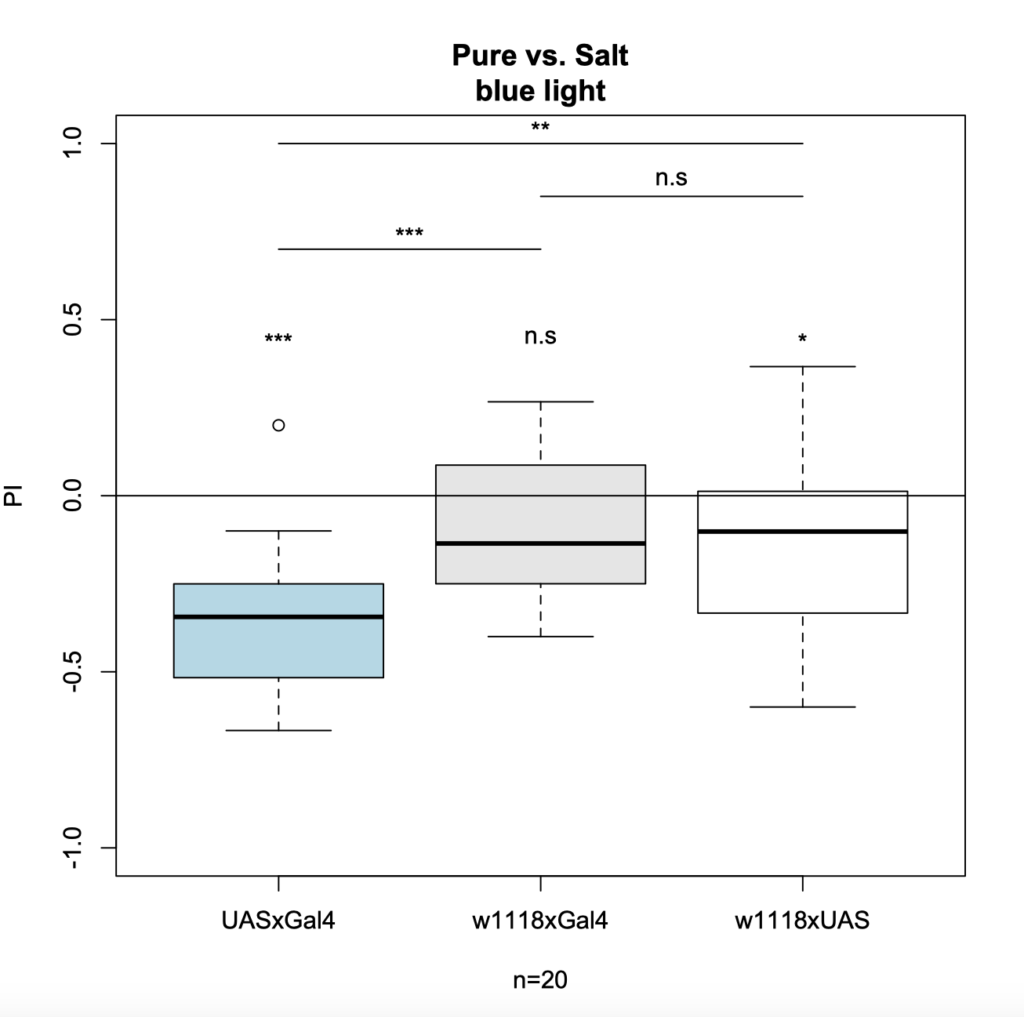
Category: Larve, Optogenetics | No Comments
Preference Results for Canton S
on Monday, June 19th, 2023 1:20 | by Maja Achatz
The following shows the preference and avoidance towards Sugar and Salt for the Canton S larvae. In addition, the larvae were tested unter blue/room light, to see if there were any differences.
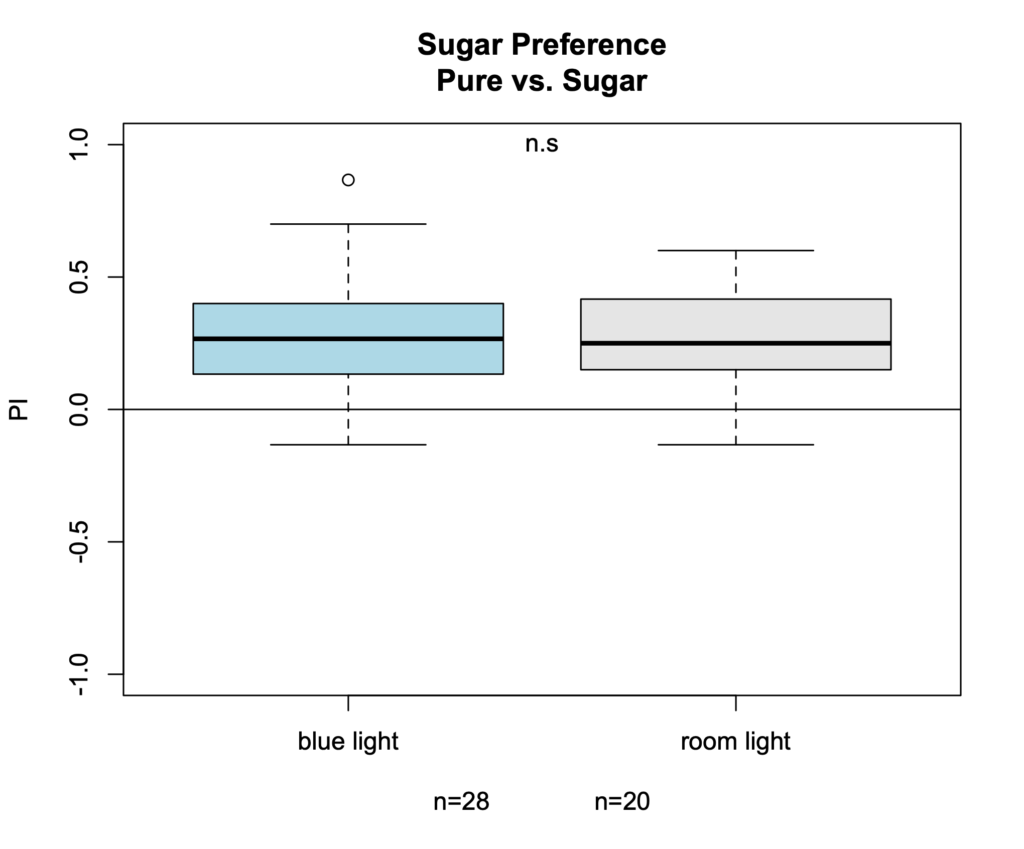
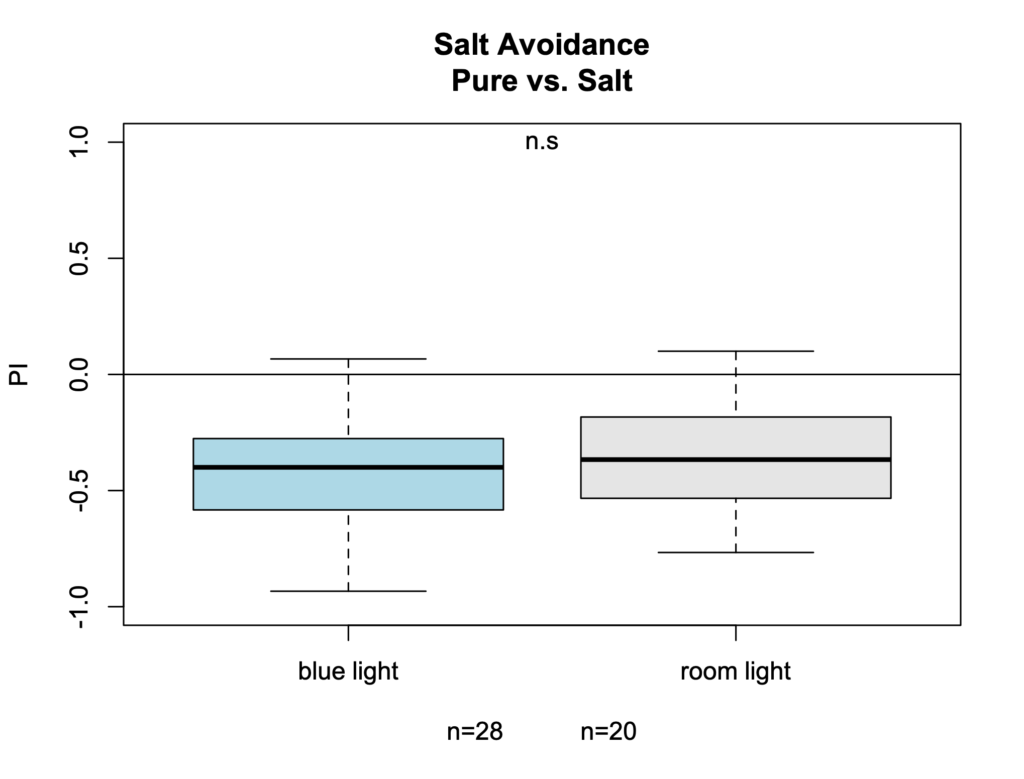
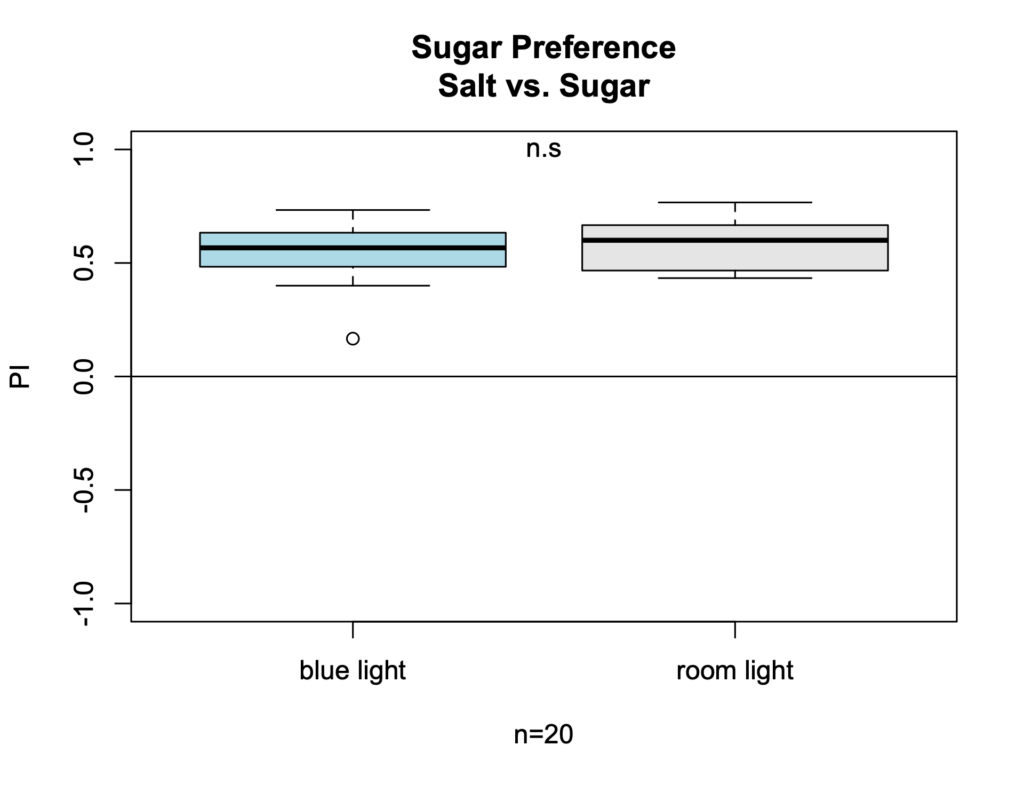
Category: Larve | No Comments
It’s a start
on Friday, June 16th, 2023 4:42 | by Björn Brembs
The first few rutabaga and radish mutants have been measured and so far it looks good: standard duration yaw torque learning – the situation all three groups should learn.

Category: Operant learning, operant self-learning | No Comments
Preference Results for Canton S larvae, Pure vs Sugar and Pure vs Salt
on Monday, June 12th, 2023 1:49 | by Maja Achatz
The following figures show the results of the preference tests with Canton S. I tested Pure vs Sugar and Pure vs Salt under two different circumstances. I tested the larvae in normal light and also under blue light.


Category: Larve | No Comments
Optomotor asymmetry after torque learning
on Tuesday, June 6th, 2023 3:31 | by Björn Brembs
Only a few more flies compared to the first week, but the difference between optomotor responses after punishing left or right torque, respectively, is starting to show:

These data suggest I should fill the groups up to a sample size beyond 20 if I want to use these data somewhere…
Category: Operant learning, Optomotor response | No Comments
Bachelor Blog / #2 problems, problems
on Monday, June 5th, 2023 12:59 | by Ellie
Hello everyone!
Things are not going well…
Over the last week I have encountered numerous problems in carrying out the planned experiment, and the biggest of these is definitely the generation of offspring. Since it has been shown that long-term memory decays quickly in the first 24 hours after operant self-learning on the flight simulator (and with that possible epigenetic marker I suppose), I decided to mate the flies immediately after training and separate them again after 16-20 hours. However, I did not get any offspring by doing this. I tried mating virgin males/virgin females and also adult males/virgin females for 16-20 h, but no eggs could be found in the vials. I have not yet found out what prevents the flies from mating and am now trying again with older (3-4 days old) adult male flies.
Another problem is the training protocol for memory consolidation by S Xia, L Liu, C Feng et al. 1997. Although I have practiced gluing and inserting flies into the flight simulator, I don’t think I can train enough flies in one day. To maintain sufficient larval density after mating, I need at least 5 females and 2-3 males, and I would need to train them twice, giving a total of 16-18 training rounds per day (and that doesn’t include failed attempts…). Alternatively, I can use the standard protocol and see if the training is enough to reveal epigenetic inheritance of acquired habits, if any.
For now, I will continue to try to produce offspring and practice gluing and training the flies. I have started to do further research on inheritance mechanisms to see if it might also be possible to work with only the F0 generation and detect epigenetic markers (methylation of genes, e.g. foxP, siRNAs) in the trained flies and compare them with untrained flies. Here (1, 2) you can find a few interesting articles on this topic.
However there is also some good news to report: my ContonS line will be ready soon, so I don’t have to work with the wtb virgin flies anymore, which decease very quickly. I have also made some progress on the statistical background after talking to a friend of mine although I still need to do some research on how to set my effect size so I can finally calculate the sample size I need for the experiment.
Joystick Results for 2-minute-testing
on Tuesday, May 30th, 2023 1:31 | by Luisa Guyton
The following figures show the results of the joystick test using the same test line as before. In addition, the flies were fed not only ATR but also 3IY (3-iodo-L-tyrosine), an inhibitor of dopamine synthesis. This was done to determine whether the previously observed effect was due to dopamine alone and could therefore be suppressed by the inhibitor, or whether other factors also influenced the flies’ behaviour in the joystick test.
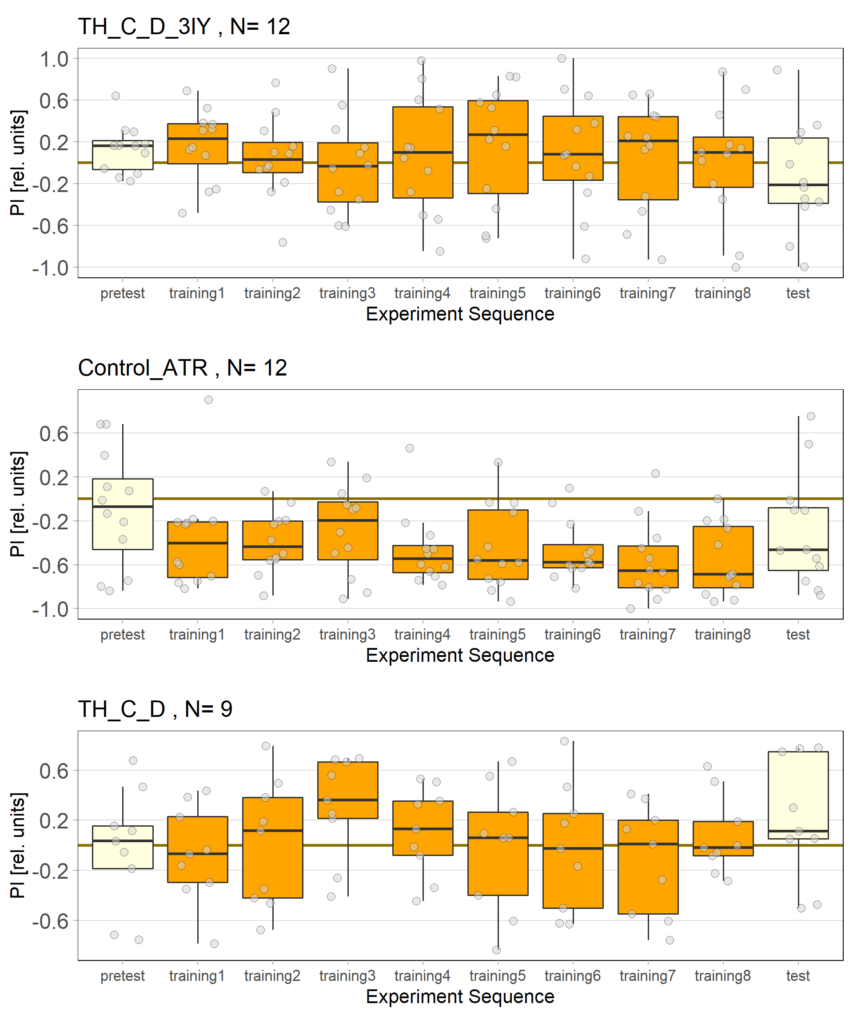

Category: Optogenetics | No Comments
Optomotor effects after torque learning?
on Friday, May 26th, 2023 5:04 | by Björn Brembs
After training 14 flies it looks as if the new setup is working as it should:

Looking at the optomotor traces more closely now that (a) we know that motor neurons are the only site of plasticity and (b) we routinely record optomotor behavior after training, something very interesting appeared when comparing flies that have been trained on one turning direction with flies trained on the other side:

Flies trained to avoid right turning show reduced optomotor response to the right and vice versa! The weaker effect for ‘left’ may be due to the weaker learning in this group?

Anyway, I have never seen this and find it quite exciting!
Category: Operant learning, Optomotor response | No Comments
